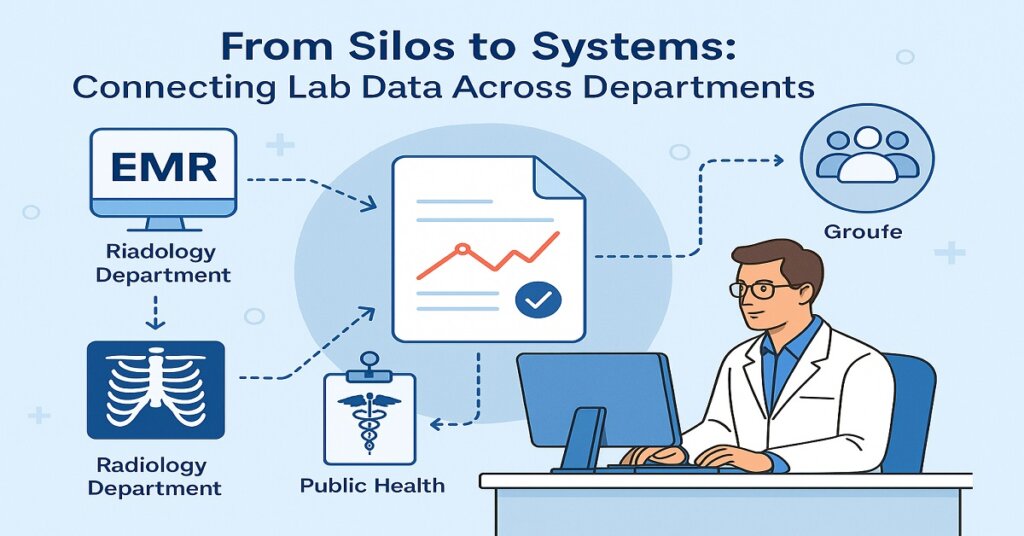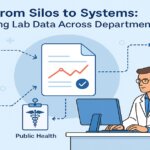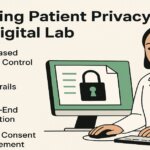
From Silos to Systems: Connecting Lab Data Across Departments
In modern healthcare, information is power—but only if it flows freely to where it’s needed most.
Unfortunately, many clinical laboratories still operate in data silos—where critical lab information is locked away in disconnected systems, inaccessible to physicians, nurses, and even other departments within the same hospital. This fragmentation leads to delays, duplication, and diagnostic blind spots.
At Skelab, we believe it’s time to break down the walls. By turning siloed labs into connected diagnostic ecosystems, we help labs become smarter, faster, and more impactful across the entire continuum of care.
🧱 The Problem with Silos in the Lab
When lab systems don’t talk to each other—or to other hospital platforms—several problems arise:
- Physicians wait for test results longer than necessary
- Nurses don’t have real-time access to lab flags
- Departments duplicate requests due to lack of visibility
- Public health reporting becomes fragmented
- Patients suffer from incomplete or delayed care
In short, data silos slow down decision-making—and in healthcare, that delay can mean everything.
🔄 From Isolated Lab to Integrated System: Skelab’s Approach
Skelab is built from the ground up to be interoperable, meaning it can connect and communicate with other health information systems securely and efficiently.
Here’s how we make it happen:
1. LIS–EMR Integration
Skelab can seamlessly integrate with leading EMRs (Electronic Medical Records), enabling:
- Instant sharing of test results
- Real-time status updates on pending tests
- One-click access to lab trends over time
✅ Clinicians don’t need to leave their EMR to access diagnostic data.
2. Bidirectional Interface with Other Departments
From radiology to pharmacy, Skelab supports API-based communication, enabling departments to:
- Order tests electronically
- Receive lab recommendations or alerts
- Share diagnostic context (e.g., symptoms, medications)
✅ This reduces redundancy and improves test appropriateness.
3. Smart Dashboards for Multi-Department Collaboration
Skelab’s visual dashboards can be customized by role:
- Physicians get clinical overviews
- Lab managers see operational KPIs
- Admins monitor compliance and billing data
Everyone sees the information that matters to them—in real time.
4. Automated Reporting to Public Health and Registries
Skelab supports HL7 and FHIR standards, allowing automatic submission of:
- COVID-19 or notifiable disease data
- Cancer markers to national registries
- Antimicrobial resistance patterns
✅ Helps labs support not just patient care—but public health too.
5. Centralized Data for Multi-Site Lab Networks
For labs operating in multiple locations or hospitals, Skelab can centralize all data into a single system:
- Unified patient records
- Shared analyzers and test protocols
- Centralized QA/QC oversight
✅ Improves consistency and coordination across locations.
🌍 The Result? Better Care, Smarter Labs
When lab data flows freely across departments, the benefits ripple outward:
- Faster diagnoses
- Fewer errors or repeat tests
- More personalized treatment plans
- Higher trust between lab and care team
- Improved patient safety and satisfaction
In short, the lab becomes a core intelligence hub, not just a backend service.
🧠 Final Thought
Healthcare is a team sport—and no team wins when players work in isolation.
By connecting your lab data with the rest of the clinical ecosystem, Skelab transforms your lab from a silo into a system—one that empowers collaboration, drives faster action, and delivers better outcomes for every patient.
Ready to break down the walls? Let’s build something smarter—together.





